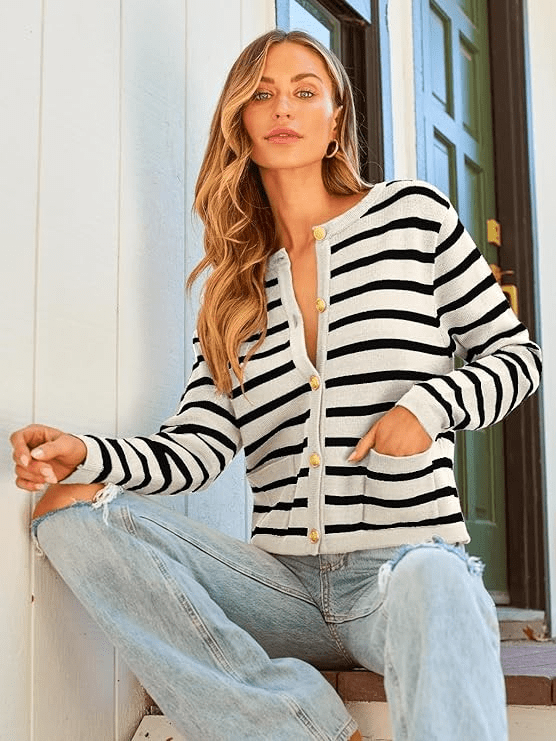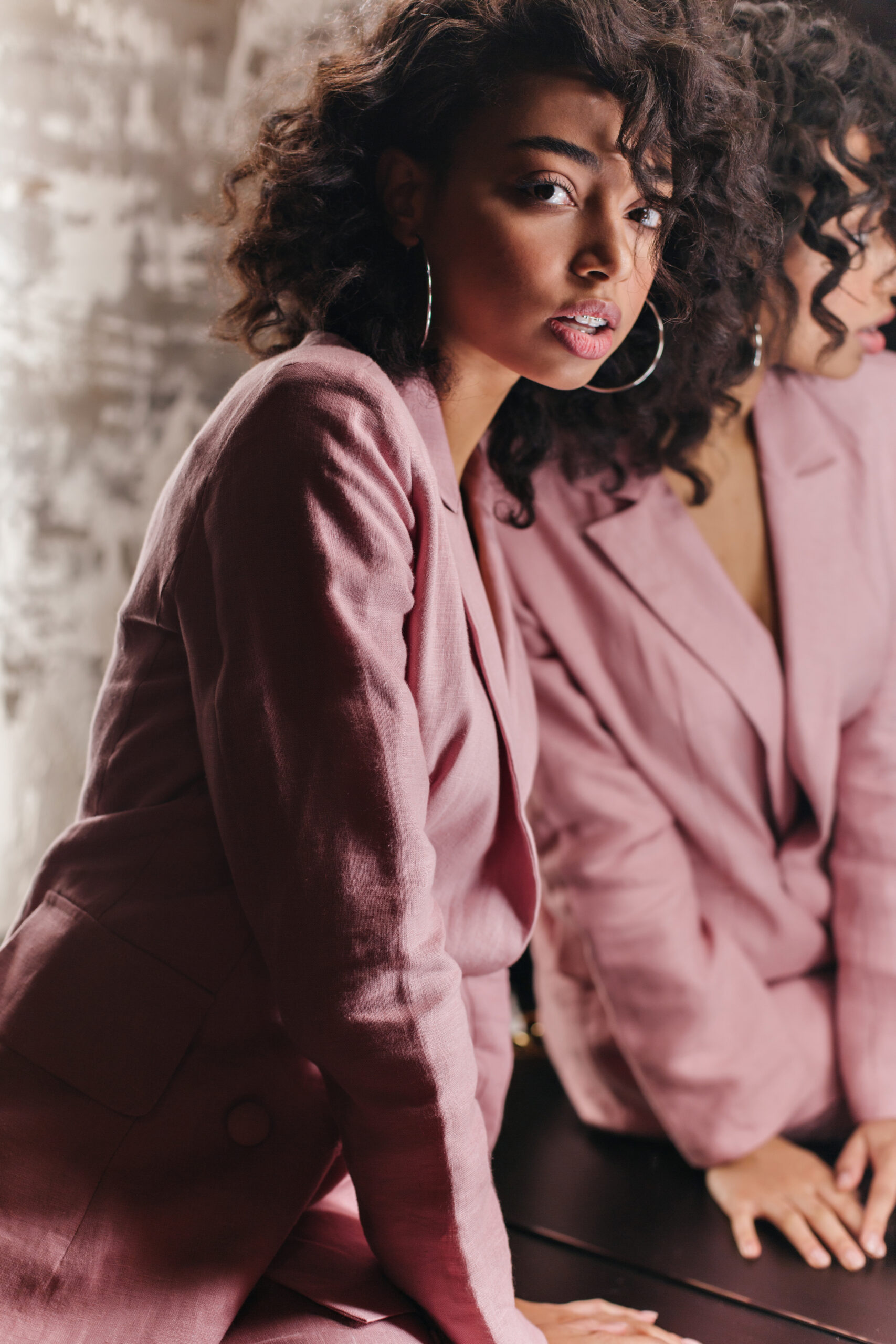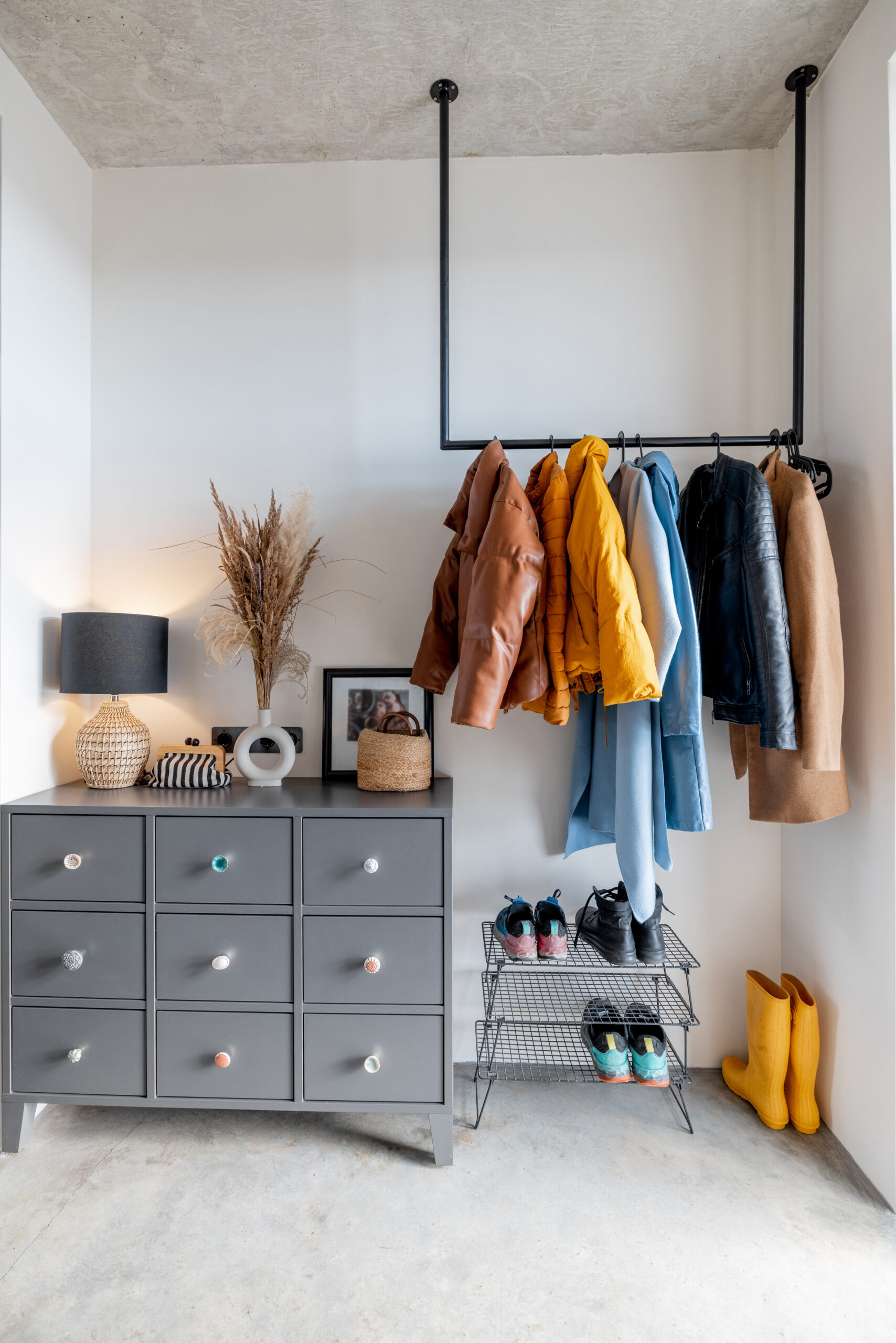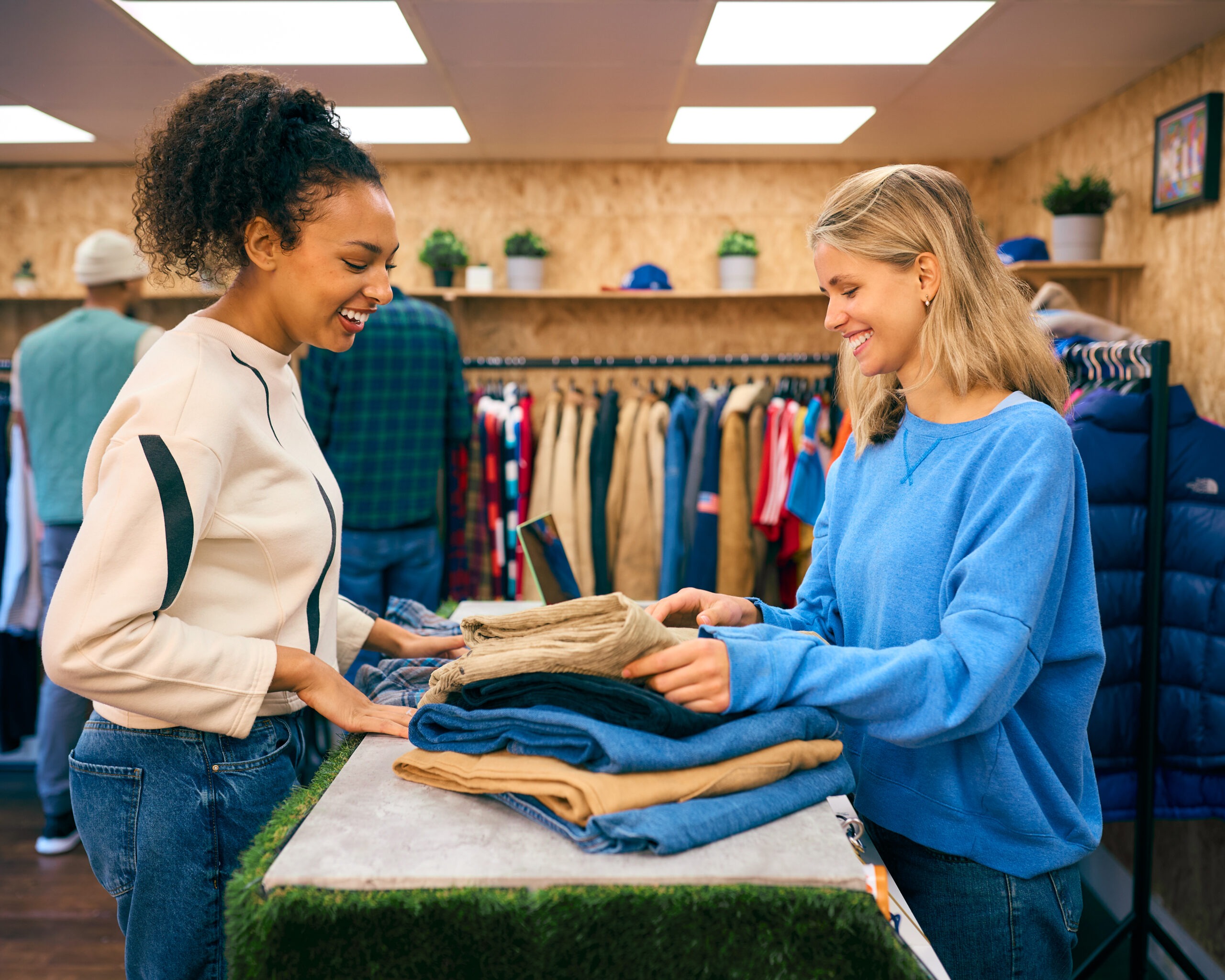At some point in your 30s, you might look at your closet and think, something just isn’t working anymore. Over time, we all collect clothes—some that once made sense, and others we’ve just hung onto out of habit or because they carry some sort of sentimental value. But how often do we actually stop to clear things out? The result? A packed wardrobe, yet nothing that feels quite right to wear.
Now that you are in your 30s, maybe your lifestyle has shifted—less late nights out, more zoom video calls, grocery store runs, and school pickups. That’s totally normal. In fact, it’s a great sign! It means you’re evolving, and your closet should evolve with you.
This is the perfect moment to start aligning your wardrobe with the life you’re living now—one that reflects who you are and where you’re headed. Ready to make room for outfits that actually work for your day-to-day? Good. In this guide, I will teach you how to get organized, rediscover old favorites, and maybe even treat yourself to a little shopping. Yay!
Let’s talk about how to simplify your wardrobe, define your style, and fall back in love with getting dressed again all while saving money in the process.
Start with the Essentials: The Core of a Functional Wardrobe
Before we talk about shopping or organizing, let’s get clear on the essential clothing items every woman in her 30s should have. These are the pieces that form the backbone of your closet—the ones you reach for again and again. You may also realize that you already own some of these items which is going to save you time and money when it comes to actually building your perfect wardrobe. Don’t worry if you do not wear some of these items often, we will find new ways to style them!
Timeless Essentials Include:
A classic white button-down
This is an essential clothing piece that does it all! You can pair it with trousers for a “business casual” look or jeans if you are going for a more relaxed vibe. Your button down should be both comfortable and well fitted. This means not too baggy and not too fitted.
A well-fitted pair of jeans
I am going to be honest and let you know right away that finding the perfect pair of jeans can be a bit challenging. Don’t worry, I have a blog post that covers everything you need to know about how to find the perfect pair of jeans for your specific body type. After reading through the article, you will want to find your perfect fit even if it means heading to the Old Navy to do a try-on haul. Fun!
A versatile black dress
The little black dress (LBD) has been a timeless fashion staple due to its simplicity and versatility. A black dress can be dressed up with statement jewelry and heels for a night out or dressed down with sneakers and a denim jacket. You can even wear it to work with a cute blazer.
Comfortable, neutral shoes (think white sneakers or loafers)
Neutral color shoes like nude, beige, black, white, and gray can complement almost any outfit. They can also go with a wide range of colors without overpowering them.
A tailored blazer
I never thought of buying a blazer until I realized just how much of a difference it can make in terms of making an outfit pop! Tailored blazers can elevate just about any outfit from formal to casual occasions.
A cozy knit or two
Cozy knitted clothes like cardigans or light sweaters are perfect for keeping you warm during cooler months and stylish during warmer ones.
A go-to tote or shoulder bag
This will be your everyday bag that is practical and fits your specific needs. If you tend to carry more items in your bag like I do, opt for a bag with different sections for organization.
Basic Tee or Tank
A high-quality tank is a great layering essential wardrobe item. Basic tees are perfect for days when you just don’t know what to wear. Find one that is high quality and won’t lose its shape over a few washes. Stick with black and white to start.
How to Build a Stylish Wardrobe: Understanding your Closet Type
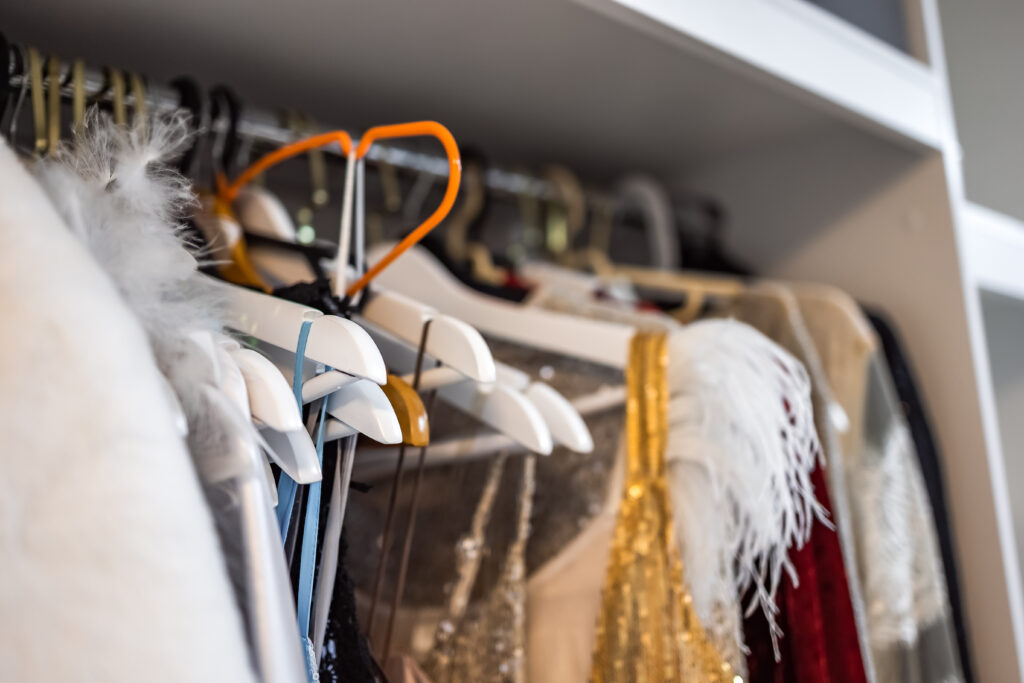
Before you begin to purge your closet, it is important that you understand what kind of closet you are working with. Not all closets are created equal. Walk into your closet and take a quick look around. The way you use your clothes should determine how you organize and curate your wardrobe. This is also a great time to look upon the clothing that you will be parting ways with as we are about to say “bye-bye” to some of them. Here are a few “closet types” to consider:
- The Capsule Closet: Minimal, intentional, often under 40 pieces. Great for decision-fatigue and simplifying.
- The Rotating Seasonal Closet: You swap clothes in and out each season for variety.
- The Sentimental Closet: Packed with memories—but maybe not practicality.
- The “I Might Need This Someday” Closet: Overflowing with ‘just in case’ pieces.
- The Hybrid Closet: A mix of all of the above (which is most of us).
Check out my blog post on different types of closets to learn more about these closet types. Now that you know what essentials you need and what type of closet you are working with, it is time to organize and declutter.
Organize and Declutter
This is where the leg work begins. Grab a bottle of water before you begin. See how nice I am? Lol. Okay, so first thing’s first create three piles. Keep, donate/sell, or discard. Only discard clothing as a last resort if the clothing is worn out or beyond mending. You can create some cute signs to make the process more fun too! With the exception of the essentials that we discussed in step 1, you are going to take every single item out of your closet that you have hardly worn and try them on. Here are some questions to consider throughout this process.
Have I worn this in the past year?
If it hasn’t made it out of the closet in 12 months, chances are it won’t in the next 12 either.
Does it still fit my current body and lifestyle?
Our lives and bodies change. Keep clothes that reflect who you are now—not who you were or think you might be.
Would I buy this today?
Imagine spotting the item in a store right now. Would you be excited to purchase it again?
Is it damaged, stained, or uncomfortable?
If it’s not wearable or it feels off every time you put it on, it’s not serving you anymore.
Am I keeping it out of guilt or sentimentality?
Emotional attachments are real but try to separate the memory from the item. You can honor the memory without the clutter.
Does this item make me feel confident and happy?
If you don’t feel good wearing it, it probably doesn’t belong in your closet.
After you have successfully created your piles, you are ready to identify your personal style.
Identify Your Personal Style
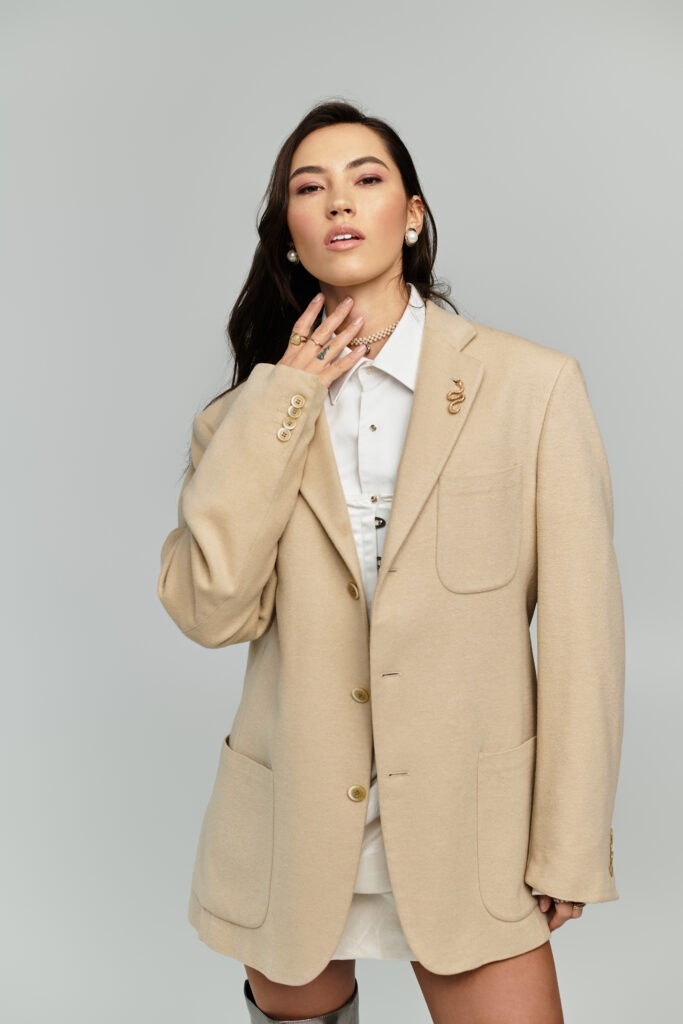
Building a capsule wardrobe is not something that you can do overnight. It takes some time to truly find which specific style you are drawn to. Take a few days and take note of the following:
- Audit your current wardrobe. Take a look at your clothing and notice the colors you gravitate towards.
- Take a look at the fabrics you own. Do you like cozy, soft fabrics (like knits and fleece) or structured, sleek ones (like leather and denim)?
- Think about one clothing item from your closet that you always reach for and ask yourself what you like about it. How does it make you feel and why?
- Take a look at the patterns that you own and see which you wear the most. Some people love the look of patterns but don’t enjoy wearing them.
- What shapes make you feel most confident—fitted, flowy, cropped, oversized?
- Identify recurring shapes (e.g., high-waisted pants, A-line skirts, boxy tops).
- Use Pinterest or a style mood board app to collect outfit inspiration and spot recurring themes.
- After doing your research. Choose 3–5 words that define your style. Ex: “Casual, feminine, earthy, vintage-inspired.”
Pro tip: Use the 80/20 Rule
80% of your wardrobe should be things you wear often and feel great in. The other 20% can be for experimentation—wild prints, bold textures, or seasonal statement pieces.
How to Build a Stylish Wardrobe: Shop Mindfully
How to Shop for Your Unique Style
Build a Color Story
Identify a few go-to colors that flatter your skin tone and are easy to mix and match. This helps streamline your closet and makes getting dressed way easier.
Focus on Versatile Staples First
Before jumping on trends, invest in well-fitting basics you can style multiple ways—like a great blazer, quality denim, or the perfect white tee. Then layer on personality pieces that reflect your vibe.
Be Honest About Comfort
If you’re not comfortable, you won’t wear it—no matter how cute it looks on the hanger. Pay attention to fabrics, waistbands, and cuts that feel good on your body all day.
Try It On with Your Life in Mind
Don’t just ask, “Is this cute?” Ask: “Can I wear this on a Monday morning?” or “Would I wear this to dinner with friends?” Imagining real situations helps weed out impulse buys.
Make a Pinterest or Screenshot Folder
Collect outfits you love and patterns you notice (e.g., “I always save outfits with ankle boots or midi skirts”). This can guide future purchases and help define your signature look.
How to Save Money) While Building a Stylish Wardrobe
Shop with a Plan
Impulse buys can drain your budget fast. Instead, create a wish list of items you actually need or pieces that will fill gaps in your wardrobe. Check out this post on Amazon Outfits Under $50. These 9 pieces are perfect for getting you started if you are looking to shop for the basics without overspending.
Embrace Thrifting and Secondhand Finds
From consignment stores to online resale apps like Poshmark or ThredUp, secondhand shopping is a goldmine.
Wait for Sales (But Don’t Wait Forever)
Sign up for brand emails or use price tracking tools (like Honey or Karma) to get alerts when something goes on sale.
Prioritize Cost-Per-Wear
A $100 blazer you wear twice a week is a smarter buy than a $25 dress you wear once.
Know When to Splurge and When to Save
Invest a bit more in timeless staples (like a great pair of jeans or a neutral coat), and save on trendy pieces that might be out of style next season.
Borrow, Swap, or Rent for One-Offs
Have a wedding, fancy event, or vacation coming up? Instead of buying something new, consider borrowing from a friend or renting through a service like Rent the Runway.
Amazon Outfit Ideas Under $50
Fashion Pieces You Can Always Find at the Thrift Store
How to Build a Stylish Wardrobe in Your 30s
Embrace Minimalist Outfits That Still Feel Like You
Minimalist doesn’t mean boring. It means intentional. It means choosing pieces that work together, fit your lifestyle, and bring you joy. The best thing about having a minimalist wardrobe is the fact that you can easily shop your closet when you are not sure what to wear.
Minimalist Outfit Formulas:
- White tee + straight-leg jeans + blazer + sneakers
- Knit dress + ankle boots + denim jacket
- Monochrome (black or tan) outfit with a bold lip or earrings
Start building “uniforms” that make getting dressed feel easy and enjoyable.
Thrift Smarter: Brands to Look For While Thrifting
If you’re ready to add something new, thrifting is the budget-friendly, sustainable way to go. But not all secondhand finds are created equal. Follow this quick guide.
Thrift-Worthy Brands Known for Quality:
- Everlane
- J.Crew
- Madewell
- Banana Republic
- Eileen Fisher
- Patagonia (for outerwear)
- Frye (for boots)
- Levi’s (especially 501s)
Bonus Tips:
- Learn to spot natural fibers (cotton, wool, linen = long-lasting)
- Make sure your thrifted clothing is free from harmful odors
- Look for structure: seams, tailoring, and lining indicate quality
- Check for wear and tear in common spots (underarms, inseams, zippers)
For a more detailed guide, check out my blog post on fashion pieces you can always find at the thrift store.
Final Thoughts
Your 30s are the perfect time to refine your style without losing your personality—or your paycheck. A well-curated closet isn’t about having more. It’s about having the right things—and knowing how to wear them. With a few core essentials, a better understanding of your style, and a thrifty eye, you can create a wardrobe that feels fresh, functional, and fully you. I hope you enjoyed this blog post. Please let me know in the comments if you find this information helpful!
